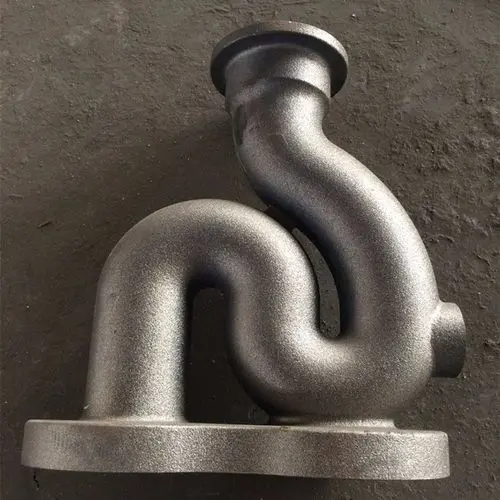
Knowledge
Gas Holes in Ductile Iron Casting (Part One)

The causes of porosity in ductile iron are diverse and can mainly be summarized as follows:
I. Melting Process Issues
Excessive or insufficient temperature: During the melting process, if the temperature is too high, elements such as iron and silicon in the molten metal will react with oxygen in the air, generating oxides and forming bubbles; conversely, if the temperature is too low, it may lead to poor fluidity of the molten metal and difficulty in gas expulsion.
Excessive addition of metallurgical reducing agents, slag, fluxes, etc.: The overuse of these additives will increase the gas content in the molten metal, which may result in the formation of pores during solidification.
II. Mold Design and Ventilation
Poor mold ventilation: Unreasonable mold design or blockage of ventilation holes during use can prevent gases in the mold cavity from being smoothly discharged during casting, causing them to be adsorbed into the metal liquid and form bubbles.
Improper design of the gating and riser system: The design of the gating and riser system directly affects the fluidity of the metal liquid and the exhaust effect. If the design is unreasonable, such as improper riser position or inappropriate riser size, it will increase the risk of porosity.
III. Cooling Rate and Rhythm
Excessively fast cooling rate: An overly rapid cooling rate can cause gases in the molten metal to solidify without being expelled, resulting in the formation of pores and the occurrence of gas holes.
Uneven cooling rhythm: During the casting process, if the cooling rhythm is not uniform, it can also lead to gases being trapped in certain areas and forming gas holes.
IV. Other Factors
Un-dried pouring ladles and tools: If pouring ladles and other tools are not dried before use, they will introduce a large amount of moisture and gas into the molten metal, increasing the possibility of porosity formation.
High hydrogen content in the molten iron: Hydrogen is an important factor causing porosity in ductile iron. During the casting process, excessive hydrogen is adsorbed by gases such as nitrogen and oxygen in the molten metal and other impurities, and forms bubbles as the metal solidifies.
In response to the causes of porosity in ductile iron, the following treatment methods can be adopted:
Optimize the smelting process: strictly control the smelting temperature and time, and select an appropriate amount of metallurgical reducing agents, furnace charges and solubilizing agents and other additives. At the same time, strengthen the exhaust and stirring operations during the smelting process to reduce the gas content.
2. Improve mold design and ventilation: Design the vent holes and gating system of the mold reasonably to ensure that the gas in the cavity can be discharged smoothly during the casting process of the molten metal. At the same time, clean and maintain the mold regularly to prevent the vent holes from being blocked.
3. Control cooling speed and rhythm: Select the appropriate cooling speed and rhythm based on the specific requirements of the casting. For areas prone to porosity, appropriate insulation measures or adjustments to the cooling method can be taken to reduce the occurrence of porosity.
4. Strengthen the management of drying ladle tools: Ensure that ladles and other tools are thoroughly dried to remove moisture and gases before use. At the same time, regularly inspect and maintain ladles and other tools to ensure they are in good condition.
5. Reduce hydrogen content in molten iron: By choosing appropriate raw materials, enhancing dehydrogenation operations during the smelting process, and optimizing the spheroidizing treatment process, the hydrogen content in molten iron can be reduced, thereby minimizing the occurrence of porosity.
Vigor has more than 18 years experience on ductile iron castings. If you have any question and demand of products development or improve your supply chain, please feel free to contact us at info@castings-forging.com



